Moderate overlap front: original test
Rating applies to 2005-12 models
Tested vehicle: 2005 Toyota Avalon XLS 4-door
The Toyota Avalon was redesigned for the 2005 model year and mildly restyled for the 2011 model year. Its size and weight were increased sufficiently to reclassify it as a large family car beginning with the 2005 models. (Earlier models were classified as midsize moderately priced cars.)
| Evaluation criteria | Rating |
|---|---|
| Overall evaluation | |
| Structure and safety cage | |
| Driver injury measures | |
| Head/neck | |
| Chest | |
| Leg/foot, left | |
| Leg/foot, right | |
| Driver restraints and dummy kinematics | |
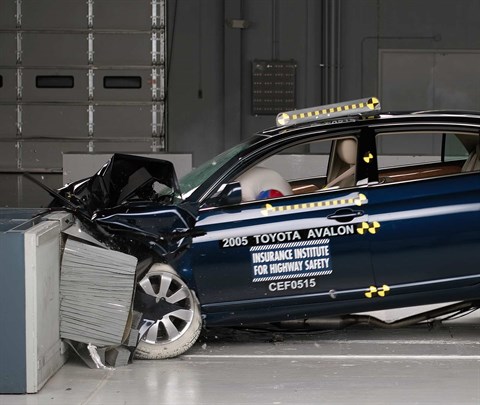
Action shot taken during the frontal offset crash test.
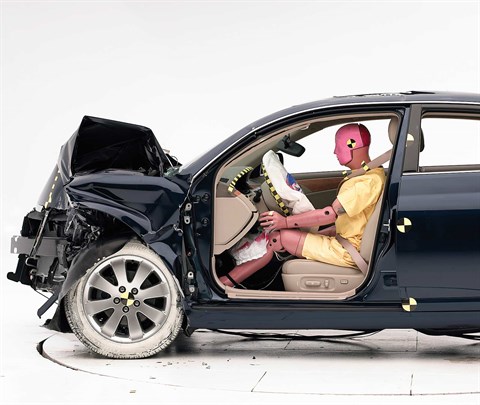
The dummy's position in relation to the steering wheel and instrument panel after the crash test indicates that the driver's survival space was maintained very well.
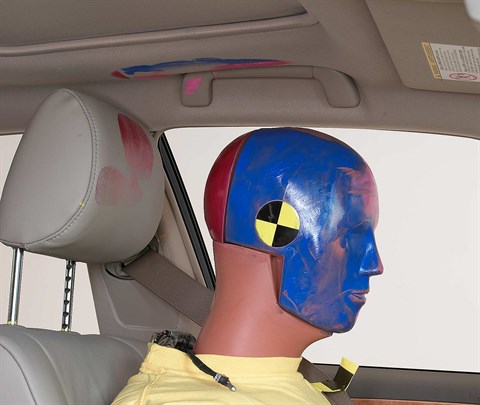
Smeared greasepaint indicates where the dummy's head hit the roof rail, grab handle, and head restraint during rebound. Head accelerations from these hits were low.

The Avalon features an airbag that deploys from the knee bolster underneath the steering wheel. The dummy's knees and shins hit this airbag as indicated by smeared greasepaint. Forces on the right knee were high enough to indicate the possibility of injuries.
Side: original test
Rating applies to 2005-12 models
Tested vehicle: 2006 Toyota Avalon XL 4-door with standard front and rear head curtain airbags and standard front seat-mounted torso airbags
The Toyota Avalon was redesigned for the 2005 model year and mildly restyled for the 2011 model year. Its size and weight were increased sufficiently to reclassify it as a large family car beginning with the 2005 models. (Earlier models were classified as midsize moderately priced cars.)
| Evaluation criteria | Rating |
|---|---|
| Overall evaluation | |
| Structure and safety cage | |
| Driver injury measures | |
| Head/neck | |
| Torso | |
| Pelvis/leg | |
| Driver head protection | |
| Rear passenger injury measures | |
| Head/neck | |
| Torso | |
| Pelvis/leg | |
| Rear passenger head protection | |
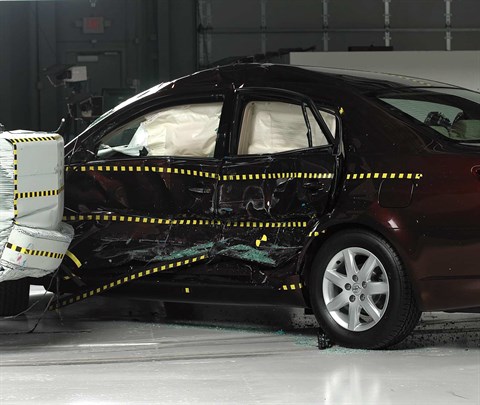
View of the vehicle and barrier just after the crash test.
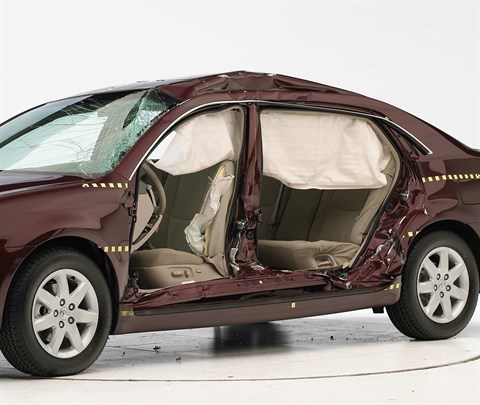
View of the vehicle after the crash with doors removed, showing the side airbags and damage to the occupant compartment.
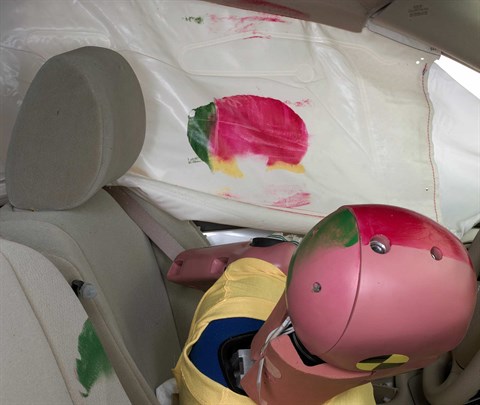
Smeared greasepaint shows where the driver dummy's head was protected from being hit by hard structures by the side curtain airbag.
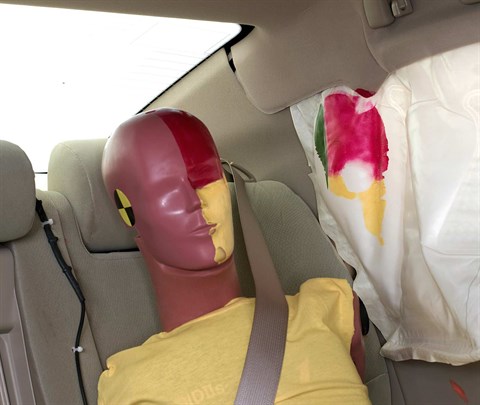
Smeared greasepaint shows where the rear passenger dummy’s head was protected by the side airbag.
Roof strength
Rating applies to 2011-12 models
Tested vehicle: 2011 Toyota Avalon 4-door
This rating also applies to 2005-10 Avalons optionally equipped with sunroofs. The sunroof was standard on 2011-12 models.
| Overall evaluation | |
|---|---|
| Curb weight | 3,583 lbs |
| Peak force | 14,574 lbs |
| Strength-to-weight ratio | 4.07 |
Head restraints & seats
Seat type: Power Leather Seat (AHR)
| Overall evaluation | |
|---|---|
| Dynamic rating | |
| Seat/head restraint geometry |
About the head restraint & seat test
Currently, IIHS tests apply only to front seats.
